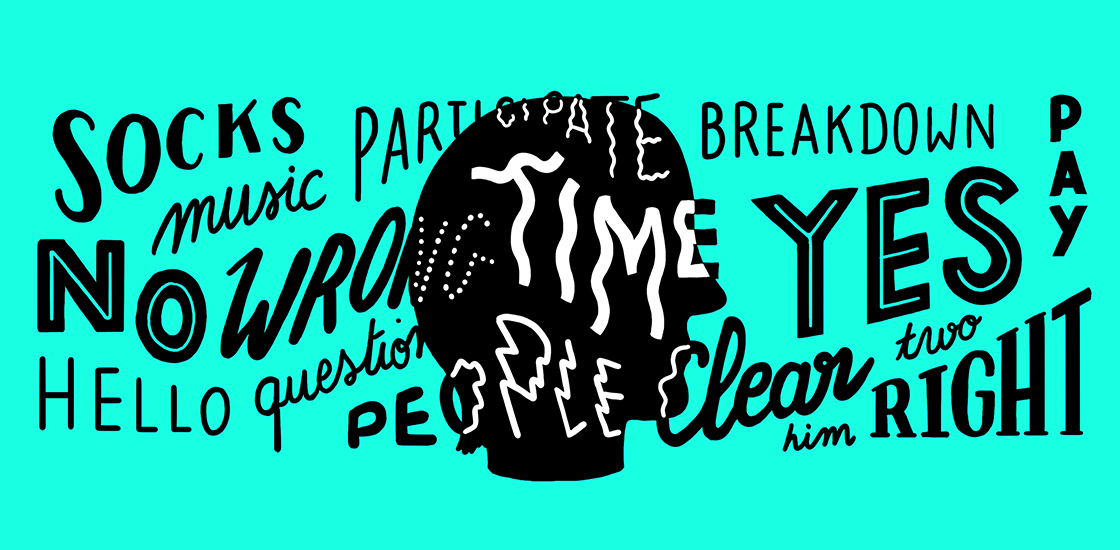THIS ARTICLE IS MORE THAN FIVE YEARS OLD
This article is more than five years old. Autism research — and science in general — is constantly evolving, so older articles may contain information or theories that have been reevaluated since their original publication date.
Listen to this story:
Communication problems have always been considered a core feature of autism. Yet there are substantial and wide-ranging differences in how people with autism communicate. That reflects not only the inherent variability of the condition, but also the complexity of communication itself — encompassing the words we use, the order in which we use them, eye contact, facial expressions, gestures and other nonverbal cues.
Challenges in any of these areas can contribute to the social difficulties individuals on the spectrum experience.
What is social communication?
Social communication may seem like a redundant term. Communication is inherently social: It requires the ability to share — in an appropriate manner — what you feel or want to say, and also to understand and respond to what others are feeling or saying. In neurotypical people, communication disorders can include problems with language, but not with social interaction. People with autism, though, are particularly challenged by communicating in social contexts. Experts use the phrase ‘social communication’ to emphasize that fact.
When were social communication difficulties first recognized as part of autism?
When Leo Kanner wrote his first paper on autism in 1943, his descriptions of the children he had observed included many problems with social communication. He noted, for example, failure to make eye contact or respond to questions, and a tendency toward obsessive conversation. Since then, language and communication impairments have consistently been part of the concept of autism, but not always a separate criterion for diagnosis.
As researchers have learned more about how language develops in people with autism, perspectives have shifted, more than once, on how and whether to consider language and social interaction as separate or joint problems. For many decades, the focus was on individuals with severe autism, who may have few words, rarely initiate interactions and barely respond. Accordingly, an autism diagnosis called for a marked impairment in conversational abilities. But clinicians began to recognize that people with autism can have strong verbal skills. Initially, those people didn’t appear to have any social communication problems either, but the past decade has shown that they are often regarded as ‘awkward’ in the way they communicate, and make more language errors than their typical peers. The latest thinking acknowledges that language is an integral part of social communication, and that social communication as a whole is a persistent problem for many people with autism.
What sorts of problems with social communication are most common in people with autism?
Individuals on the spectrum have been shown to face challenges with a range of verbal and nonverbal skills, including grammar, the correct use of pronouns and responding when spoken to. Differences in some nonverbal aspects of communication, such as facial expressions and the tempo of speech, may account for what others perceive as ‘awkwardness’ in people with autism.
As with so many autism features, there is tremendous variability from one person to the next. Still, problems with two aspects of communication stand out: pragmatics and prosody.
What are pragmatics and prosody?
Pragmatics is the appropriate use of language in social situations. Examples include being able to stay on topic and take turns in a conversation, ask appropriate questions and use a tone of voice suitable for the setting (for instance, a quieter voice in a classroom versus a playground). Many autism therapies incorporate explicit training on these skills.
Prosody is the rhythm of speech and encompasses aspects of both verbal and nonverbal communication. Carried in the spoken words and the pauses in between, prosody has multiple functions. For one, it conveys pragmatic information. A rising tone, for instance, indicates a question. Prosody also communicates emotion. The question ‘What do you mean?’ can be positive, negative or neutral depending on how it’s spoken; prosody is what alerts a listener to the difference.
Problems with prosody can vary. Some individuals speak in a monotone, whereas others exaggerate high and low pitches so dramatically that listeners find their speech unnatural.
Can problems with social communication exist outside autism?
In 2013, the “Diagnostic and Statistical Manual of Mental Disorders” (DSM-5) added a new diagnosis: social communication disorder (SCD). This condition shares many of the traits common among people with autism, such as difficulty responding to others, using gestures, staying on topic, and making and keeping friends. But individuals diagnosed with SCD do not show repetitive behaviors or restricted interests. Not all researchers agree, however, that SCD should be a separate diagnosis: They argue that there’s not enough evidence that SCD is a valid and reliably distinct condition separate from autism.
Where is research on social communication headed?
Clinicians are working to improve therapy for pragmatics because it is broadly relevant to most people on the spectrum. A few researchers are focusing on identifying subtler problems with social communication that make interactions challenging even for individuals with strong language and cognitive skills. New acoustic analysis and motion-capture technologies are allowing for detailed measurement of vocal pitch, among other variables, and of minute movements that make up facial expressions.
Communication between people with and without autism is a two-way problem. Individuals on the spectrum may have communication challenges to address, but their typical peers and conversation partners could do more to meet them halfway by accepting differences in the way they express themselves.

By joining the discussion, you agree to our privacy policy.